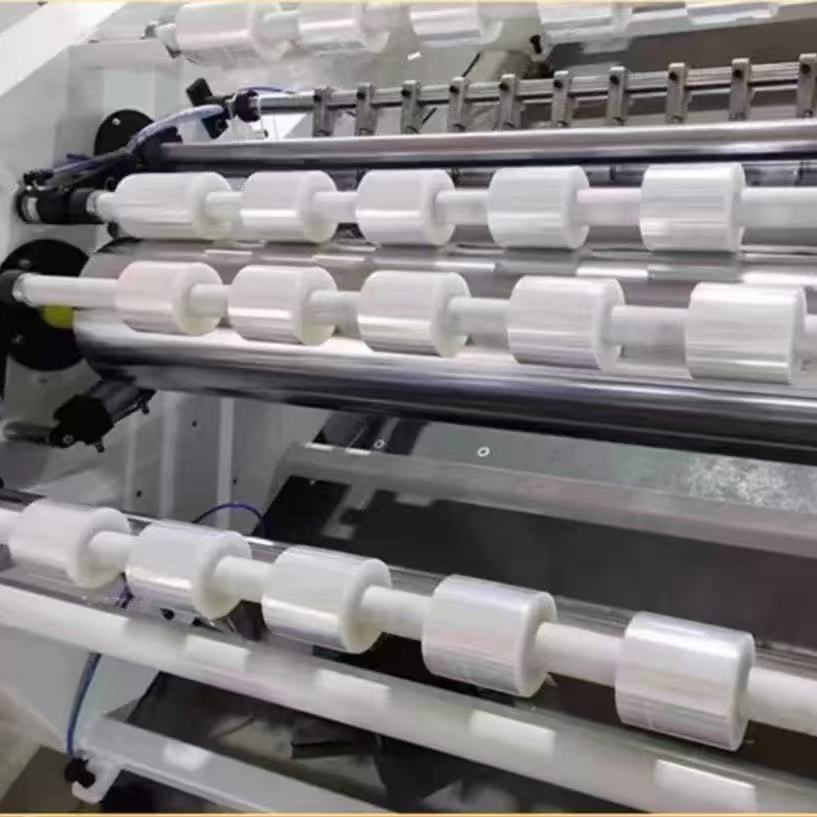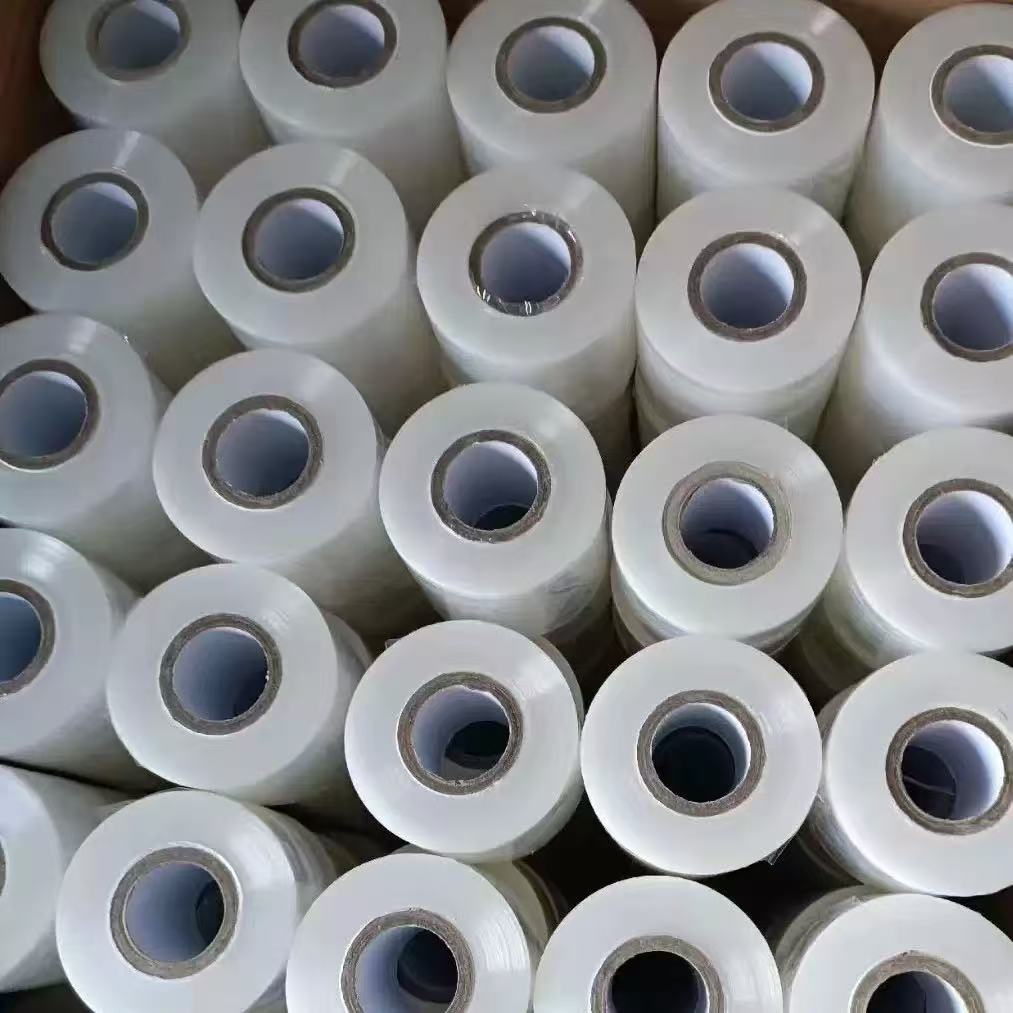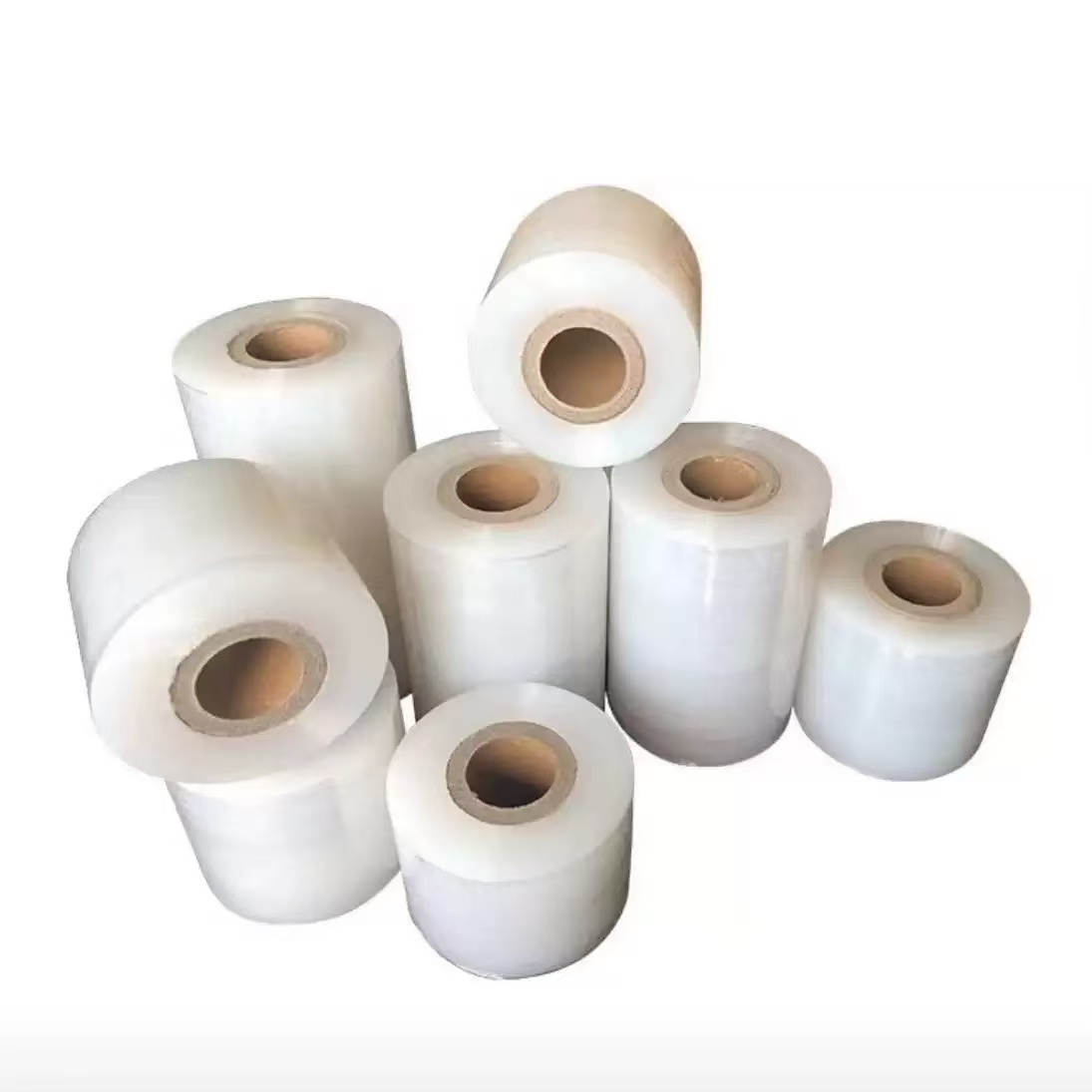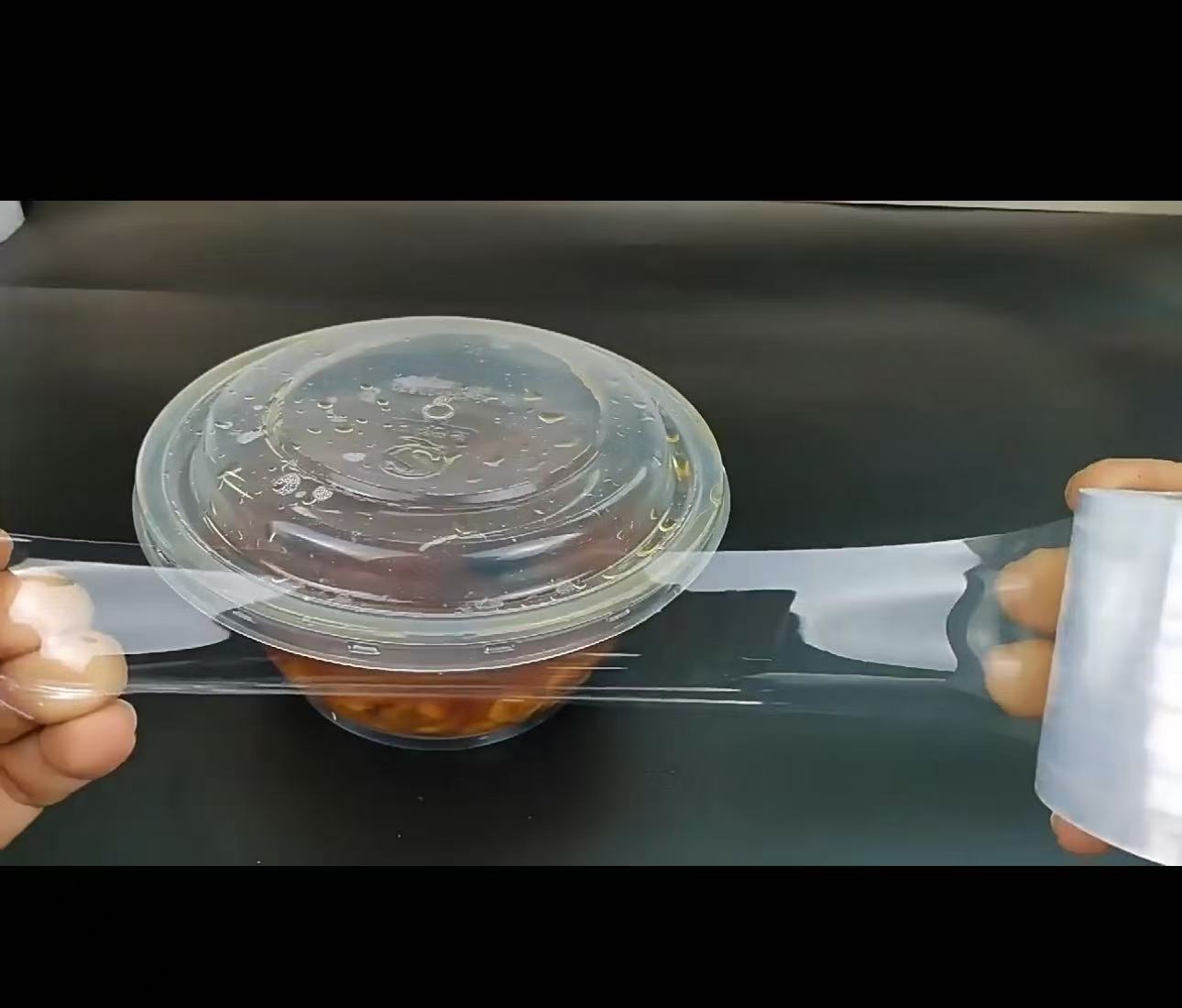
The Clear Advantage of Transparent PE film in Packaging and Logistics
2025-09-10 17:04Transparent PE Film: Characteristics and Versatile Applications
Introduction to Transparent PE FilmPolyethylene (PE) film, particularly in its transparent form, referred to as transparent PEfilm, is one of the most widely used plastic films in the world due to its remarkable versatility, cost-effectiveness, and functional properties. Made from polyethylene, a thermoplastic polymer, transparent PEfilm is valued for its flexibility, toughness, and clarity, making it an ideal material for applications such as seal packaging, bundling packaging, and cargo securing. Its ability to protect, preserve, and stabilize goods across industries like food, logistics, and manufacturing has cemented its role as a cornerstone material. This article explores the defining characteristics of transparent PE film and its diverse applications, showcasing its critical contributions to modern packaging and logistics solutions.Key Characteristics of Transparent PE filmTransparent PE film is engineered to meet a wide range of functional requirements, combining physical durability with practical usability. Its key properties include:Flexibility and Elasticity: Transparent PE film, particularly low-density polyethylene (LDPE) and linear low-density polyethylene (LLDPE) variants, offers excellent flexibility and stretchability. LLDPE stretch films, for instance, can elongate up to 300% without breaking, making them ideal for wrapping and securing irregularly shaped items.
characteristics of transparent PE film and its diverse applications, showcasing its critical contributions to modern packaging and logistics solutions.Key Characteristics of Transparent PE filmTransparent PE film is engineered to meet a wide range of functional requirements, combining physical durability with practical usability. Its key properties include:Flexibility and Elasticity: Transparent PE film, particularly low-density polyethylene (LDPE) and linear low-density polyethylene (LLDPE) variants, offers excellent flexibility and stretchability. LLDPE stretch films, for instance, can elongate up to 300% without breaking, making them ideal for wrapping and securing irregularly shaped items.
Transparency and Clarity: The high optical clarity of transparent PE film allows for easy inspection of packaged goods, ensuring visibility for branding, barcodes, or quality control. Its refractive index, typically around 1.51, ensures minimal distortion, making it suitable for applications where aesthetics matter.
Tensile Strength and Durability: With tensile strengths ranging from 20 to 40 MPa for LDPE and higher for LLDPE, transparent PE film resists punctures and tears, providing reliable protection during handling and transport. This durability ensures that goods remain secure under mechanical stress.
Moisture and Chemical Resistance: PE film is inherently resistant to moisture, oils, and mild chemicals, making it an excellent barrier for protecting products from environmental factors. Its water vapor transmission rate (WVTR) is typically low, around 15–20 g/m²/day, ensuring moisture-sensitive goods stay dry.
Cost-Effectiveness: Transparent PE film is one of the most economical packaging materials available, with production costs significantly lower than alternatives like PVC or PET films. Its lightweight nature also reduces shipping costs, making it a preferred choice for large-scale applications.
Recyclability: PE is a recyclable thermoplastic, and transparent PE film can be reprocessed into new products, aligning with sustainability goals. Advances in recycling technologies have further enhanced its eco-friendly profile, particularly for applications in food and industrial packaging.
These characteristics make transparent PE film a highly adaptable material, capable of meeting the diverse needs of packaging and logistics industries.Applications of Transparent PE film
1. Seal PackagingTransparent PEfilm is extensively used in seal packaging, particularly for food, pharmaceuticals, and consumer goods. Its primary role is to create airtight seals that preserve product freshness, prevent contamination, and extend shelf life. In food packaging, for example, LDPE-based transparent PEfilm is used to seal perishable items like fresh produce, meat, or dairy products. The film’s moisture resistance ensures that products like fruits and vegetables remain fresh by preventing dehydration, while its clarity allows consumers to inspect the contents for quality.In the pharmaceutical industry, transparent PEfilm is used to seal blister packs or pouches, protecting medicines from moisture and air. The film’s flexibility allows it to conform to complex shapes during heat-sealing processes, ensuring a secure closure. For instance, a typical heat-sealing temperature for PEfilm ranges from 120°C to 180°C, depending on the formulation, ensuring compatibility with high-speed packaging lines. Its chemical inertness complies with regulatory standards like those set by the FDA or EU, making it safe for direct food and drug contact.The transparency of PEfilm also enhances branding opportunities. Manufacturers can print logos or nutritional information directly onto the film, leveraging its clarity to create visually appealing packaging. For example, a transparent PE film pouch for frozen berries not only protects the product but also showcases its vibrant colors, enticing consumers.
2. Bundling PackagingIn bundling packaging, transparent PE film, particularly stretch film made from LLDPE, is used to group multiple items together for efficient handling, storage, and transport. This application is common in industries like beverages, construction, and retail, where products like bottled water, bricks, or canned goods need to be securely bundled. The film’s high elasticity allows it to tightly wrap around items, creating a cohesive unit that resists shifting or damage during transit.For example, a pallet of bottled water may be wrapped with a 20-micron transparent PE film, which stretches to conform to the pallet’s shape, providing a tight, secure hold. The film’s cling properties, often enhanced with additives like polyisobutylene, ensure that it adheres to itself without sticking to the packaged goods, simplifying unwrapping. Its tensile strength, typically around 30 MPa for LLDPE stretch films, prevents tearing even under the weight of heavy loads.The transparency of PE film is a key advantage in bundling, as it allows for easy scanning of barcodes or inspection of product labels without unwrapping.
This is particularly valuable in retail settings, where bundled products like multipacks of soda cans need to remain identifiable on store shelves. Additionally, the film’s recyclability supports sustainable practices, as used stretch film can be collected and reprocessed into new packaging materials.
3. Cargo SecuringTransparent PE film plays a critical role in cargo securing, particularly in logistics and shipping, where it is used as stretch wrap or shrink film to stabilize pallets and protect goods during transport. Stretch films, made from LLDPE, are applied using manual or automated wrapping machines, stretching the film to tightly secure pallets of goods like electronics, furniture, or industrial components. The film’s elasticity and strength ensure that loads remain stable, reducing the risk of toppling or damage during shipping.For instance, a pallet of electronics may be wrapped with a 25-micron transparent PEfilm, providing a puncture-resistant barrier that protects against dust, moisture, and tampering. The film’s clarity allows logistics teams to verify contents or scan barcodes without unwrapping, streamlining warehouse operations. In shrink film applications, transparent PEfilm is heated to shrink tightly around goods, creating a tamper-evident seal. This is common for securing irregularly shaped items, such as furniture or machinery parts, where the film conforms to the product’s contours.
4. The moisture resistance of PE film is particularly valuable in cargo securing, as it protects goods from rain or humidity during transport. Its UV-resistant variants can also withstand prolonged outdoor exposure, ensuring cargo integrity during long-haul shipping. The film’s lightweight nature minimizes added weight, reducing fuel costs compared to heavier alternatives like strapping or corrugated packaging.4. Additional ApplicationsBeyond seal packaging, bundling, and cargo securing, transparent PEfilm finds applications in other areas. In agriculture, it is used as greenhouse film or mulch film, leveraging its transparency to allow sunlight penetration while protecting crops from weather extremes. In construction, PEfilm serves as a protective cover for materials like concrete or steel, shielding them from moisture and dust. Its versatility also extends to medical packaging, where it is used for sterile wraps, and retail, where it creates clear bags for displaying products like clothing or accessories.Advantages Over Alternative MaterialsCompared to alternatives like PVC or polypropylene films, transparent PEfilm offers several advantages. Its flexibility and elasticity surpass those of PVC, making it better suited for stretch and shrink applications. PEfilm is also more cost-effective than polypropylene, which is often more rigid and expensive. Additionally, PE’s recyclability and lower environmental impact during production make it a more sustainable choice than PVC, which may release harmful chemicals during disposal.Challenges and ConsiderationsDespite its benefits, transparent PE film has limitations. Its relatively low melting point (around 120°C for LDPE) makes it less suitable for high-temperature applications compared to PET or PVC films. For outdoor use, UV stabilizers are necessary to prevent degradation from sunlight exposure.
5. Additionally, while PE is recyclable, improper disposal can contribute to plastic waste, necessitating robust recycling infrastructure.Future Trends and InnovationsThe future of transparent PEfilm is shaped by advancements in sustainability and performance. Bio-based PE films, derived from renewable sources like sugarcane, are gaining traction, reducing reliance on fossil-based plastics. Innovations in multilayer PE films are improving barrier properties, such as oxygen and aroma retention, expanding their use in food packaging. Additionally, smart films with embedded sensors for monitoring freshness or tampering are emerging, enhancing the functionality of PEfilm in high-tech applications.ConclusionTransparent PEfilm is a dynamic and indispensable material that combines flexibility, durability, and clarity to meet the needs of modern packaging and logistics. Its applications in seal packaging, bundling packaging, and cargo securing demonstrate its ability to protect, preserve, and stabilize goods across industries. With its cost-effectiveness, recyclability, and ongoing innovations, transparent PE film is poised to remain a vital component in sustainable and efficient packaging solutions, supporting industries from food to logistics in an increasingly demanding world.

